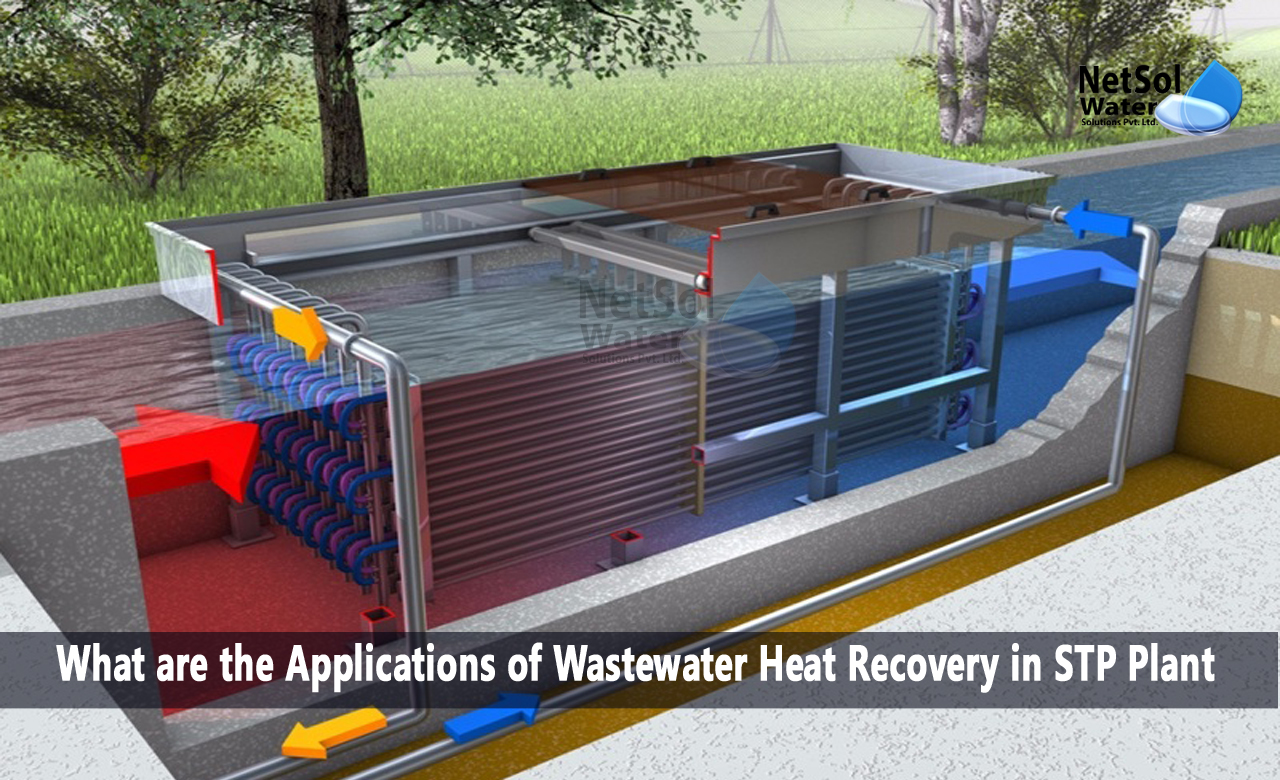What are the Applications of Wastewater Heat Recovery in STP Plant?
As the global demand for energy continues to rise, it becomes crucial to explore innovative and sustainable ways of generating power and reducing energy consumption. Sewage treatment plants (STPs) provide a unique opportunity for energy recovery through wastewater heat recovery. By harnessing the thermal energy present in wastewater, STPs can not only reduce their own energy consumption but also contribute to the overall energy efficiency and sustainability of the surrounding communities.
This blog delves into the concept of wastewater heat recovery, its applications, and the benefits it offers for a greener future.
Understanding Wastewater Heat Recovery
Wastewater heat recovery is the process of capturing and utilizing the thermal energy present in wastewater generated by residential, commercial, and industrial sources. The principle behind this technology is to extract the heat from wastewater before it is discharged or treated and transfer it to a separate heat exchange system. The recovered thermal energy can then be utilized for various purposes, such as space heating, water heating, or even electricity generation.
Applications of Wastewater Heat Recovery in STPs
- Space Heating: One of the primary applications of wastewater heat recovery is space heating. The recovered thermal energy can be used to heat nearby buildings, including residential, commercial, and institutional structures. By utilizing the captured heat, STPs can offset the need for additional heating systems, thereby reducing energy consumption and costs.
- Water Heating: Wastewater heat recovery can also be employed for water heating purposes. The extracted heat can be used to preheat water entering the STP or to heat water for various applications, such as showers, laundry, or cleaning processes. This reduces the energy required to heat water from conventional sources, leading to significant energy savings.
- Electricity Generation: In certain cases, the recovered thermal energy can be converted into electricity through the use of heat-to-power technologies. For instance, organic Rankine cycle (ORC) systems can convert low-temperature heat into electricity. By integrating such systems with wastewater heat recovery, STPs can generate renewable electricity while simultaneously reducing their reliance on grid power.
Benefits of Wastewater Heat Recovery
- Energy Efficiency: Wastewater heat recovery significantly improves energy efficiency by utilizing a previously untapped energy source. By capturing and repurposing the thermal energy in wastewater, STPs can reduce their dependence on conventional energy sources, thereby lowering energy consumption, carbon emissions, and operational costs.
- Renewable Energy Generation: By integrating wastewater heat recovery with electricity generation technologies, STPs can contribute to renewable energy generation. The recovered heat can be converted into electricity, further reducing the reliance on fossil fuel-based power and promoting a cleaner energy mix.
- Cost Savings: Implementing wastewater heat recovery systems can result in substantial cost savings for STPs and the surrounding communities. By offsetting the need for additional heating or hot water systems, STPs can reduce energy expenses and operational costs.
- Environmental Sustainability: Wastewater heat recovery aligns with the principles of environmental sustainability by utilizing a readily available and renewable energy source. By reducing the demand for conventional energy generation, STPs can mitigate the environmental impact associated with carbon emissions and contribute to a greener and more sustainable future.
Best Practices for Wastewater Heat Recovery
- System Design and Optimization: Proper system design is crucial for effective wastewater heat recovery. It involves assessing the temperature and flow characteristics of the wastewater, selecting appropriate heat exchange technologies, and optimizing the overall system efficiency.
- Integration with Energy Management Systems: Integrating wastewater heat recovery systems with advanced energy management systems allows for efficient control, monitoring, and optimization of heat transfer processes. This integration enables better management of thermal energy, maximizing its utilization and minimizing losses.
- Collaboration and Partnerships: Collaboration with experts, researchers, and technology providers in the field of wastewater heat recovery is essential for staying updated on the latest advancements and best practices. Partnerships with stakeholders and local communities can also help in securing funding and support for implementing wastewater heat recovery projects.
Conclusion
Wastewater heat recovery presents a promising avenue for enhancing energy efficiency and sustainability in sewage treatment plants. By harnessing the thermal energy present in wastewater, STPs can reduce their energy consumption, generate renewable electricity, and contribute to a greener future. The benefits of wastewater heat recovery include improved energy efficiency, cost savings, renewable energy generation, and environmental sustainability. By adopting best practices, optimizing system design, and fostering collaboration, STPs can maximize the potential of wastewater heat recovery and play a pivotal role in achieving a more sustainable and energy-efficient society.



